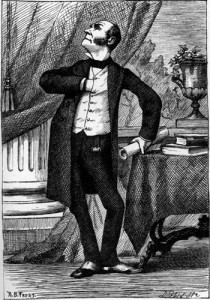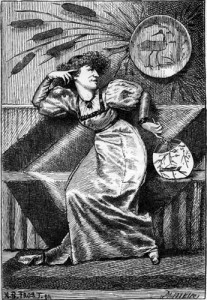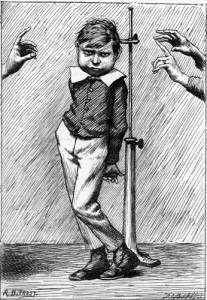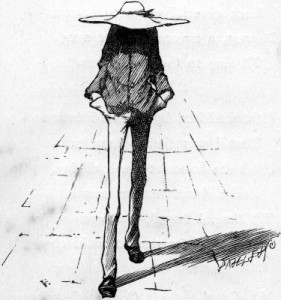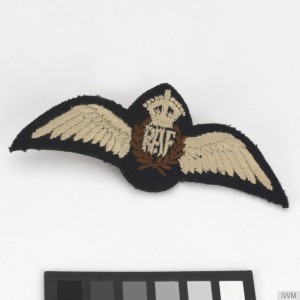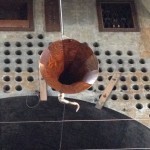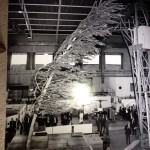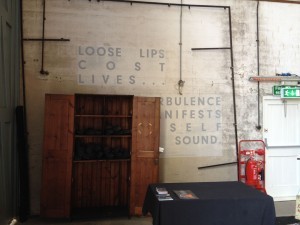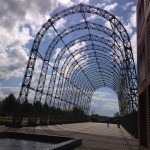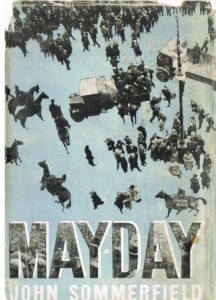Lydia Syson's Blog, page 6
December 7, 2014
Can I get there by Candlelight?
If you head over to The History Girls, you’ll find some seasonal thoughts on candlelight through time, how light can affect plot, and the magical experience of watching ‘Tis Pity She’s a Whore from the Musicians’ Gallery of the Sam Wanamaker Playhouse.
November 24, 2014
Hiawatha: Photographer
As some of you may know from my most recent post on The History Girls, I’ve been doing a lot of research this year into nineteenth-century photography for my new book, Liberty’s Fire. One day, just as I was despairing that I would ever get my head round the different processes involved in wet, as opposed to dry, collodion, or daguerreotype and tintype, or remember exactly how long each stage might take, or which chemicals would have what effect, let alone weave this seamlessly into a gripping narrative, I came across a wonderful poem by Lewis Carroll which made me laugh out loud. Since I am deep in edits, I thought I’d share it with you now.
It helped that one of the grimmer moments of 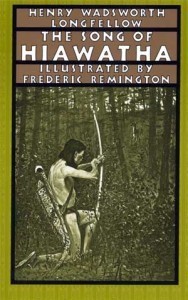 my secondary school career was ‘doing’ Longfellow’s Song of Hiawatha. At the time, while we chanted it in sections, desk by drooping desk, it seemed to me the dreariest epic on earth. But it is also one of the most parodiable. And nobody could do it better than Carroll. Here he brilliantly captures not just the precise, technical challenges facing mid-Victorian portrait photographers, but the even greater difficulties caused by their human subjects. From its earliest days, the art of photography, and its promise of perfect representation, seems to have brought out the worst in people, provoking an endless capacity for self-delusion.
my secondary school career was ‘doing’ Longfellow’s Song of Hiawatha. At the time, while we chanted it in sections, desk by drooping desk, it seemed to me the dreariest epic on earth. But it is also one of the most parodiable. And nobody could do it better than Carroll. Here he brilliantly captures not just the precise, technical challenges facing mid-Victorian portrait photographers, but the even greater difficulties caused by their human subjects. From its earliest days, the art of photography, and its promise of perfect representation, seems to have brought out the worst in people, provoking an endless capacity for self-delusion.
HIAWATHA’S PHOTOGRAPHING
From his shoulder Hiawatha
Took the camera of rosewood,
Made of sliding, folding rosewood;
Neatly put it all together.
In its case it lay compactly,
Folded into nearly nothing;
But he opened out the hinges,
Pushed and pulled the joints and hinges,
Till it looked all squares and oblongs,
Like a complicated figure
In the Second Book of Euclid.
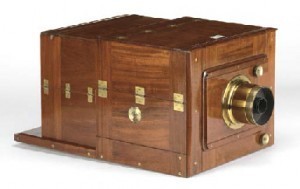
Ottewill Double Folding Camera (see note)
This he perched upon a tripod -
Crouched beneath its dusky cover -
Stretched his hand, enforcing silence -
Said, “Be motionless, I beg you!”
Mystic, awful was the process.
All the family in order
Sat before him for their pictures:
Each in turn, as he was taken,
Volunteered his own suggestions,
His ingenious suggestions.
First the Governor, the Father:
He suggested velvet curtains
Looped about a massy pillar;
And the corner of a table,
Of a rosewood dining-table.
He would hold a scroll of something,
Hold it firmly in his left-hand;
He would keep his right-hand buried
(Like Napoleon) in his waistcoat;
He would contemplate the distance
With a look of pensive meaning,
As of ducks that die ill tempests.
Grand, heroic was the notion:
Yet the picture failed entirely:
Failed, because he moved a little,
Moved, because he couldn’t help it.
Next, his better half took courage;
SHE would have her picture taken.
She came dressed beyond description,
Dressed in jewels and in satin
Far too gorgeous for an empress.
Gracefully she sat down sideways,
With a simper scarcely human,
Holding in her hand a bouquet
Rather larger than a cabbage.
All the while that she was sitting,
Still the lady chattered, chattered,
Like a monkey in the forest.
“Am I sitting still?” she asked him.
“Is my face enough in profile?
Shall I hold the bouquet higher?
Will it came into the picture?”
And the picture failed completely.
Next the Son, the Stunning-Cantab:
He suggested curves of beauty,
Curves pervading all his figure,
Which the eye might follow onward,
Till they centered in the breast-pin,
Centered in the golden breast-pin.
He had learnt it all from Ruskin
(Author of ‘The Stones of Venice,’
‘Seven Lamps of Architecture,’
‘Modern Painters,’ and some others);
And perhaps he had not fully
Understood his author’s meaning;
But, whatever was the reason,
All was fruitless, as the picture
Ended in an utter failure.
Next to him the eldest daughter:
She suggested very little,
Only asked if he would take her
With her look of ‘passive beauty.’
Her idea of passive beauty
Was a squinting of the left-eye,
Was a drooping of the right-eye,
Was a smile that went up sideways
To the corner of the nostrils.
Hiawatha, when she asked him,
Took no notice of the question,
Looked as if he hadn’t heard it;
But, when pointedly appealed to,
Smiled in his peculiar manner,
Coughed and said it ‘didn’t matter,’
Bit his lip and changed the subject.
Nor in this was he mistaken,
As the picture failed completely.
So in turn the other sisters.
Last, the youngest son was taken:
Very rough and thick his hair was,
Very round and red his face was,
Very dusty was his jacket,
Very fidgety his manner.
And his overbearing sisters
Called him names he disapproved of:
Called him Johnny, ‘Daddy’s Darling,’
Called him Jacky, ‘Scrubby School-boy.’
And, so awful was the picture,
In comparison the others
Seemed, to one’s bewildered fancy,
To have partially succeeded.
Finally my Hiawatha
Tumbled all the tribe together,
(‘Grouped’ is not the right expression),
And, as happy chance would have it
Did at last obtain a picture
Where the faces all succeeded:
Each came out a perfect likeness.
Then they joined and all abused it,
Unrestrainedly abused it,
As the worst and ugliest picture
They could possibly have dreamed of.
‘Giving one such strange expressions -
Sullen, stupid, pert expressions.
Really any one would take us
(Any one that did not know us)
For the most unpleasant people!’
(Hiawatha seemed to think so,
Seemed to think it not unlikely).
All together rang their voices,
Angry, loud, discordant voices,
As of dogs that howl in concert,
As of cats that wail in chorus.
But my Hiawatha’s patience,
His politeness and his patience,
Unaccountably had vanished,
And he left that happy party.
Neither did he leave them slowly,
With the calm deliberation,
The intense deliberation
Of a photographic artist:
But he left them in a hurry,
Left them in a mighty hurry,
Stating that he would not stand it,
Stating in emphatic language
What he’d be before he’d stand it.
Hurriedly he packed his boxes:
Hurriedly the porter trundled
On a barrow all his boxes:
Hurriedly he took his ticket:
Hurriedly the train received him:
Thus departed Hiawatha.
From RHYME? AND REASON? by Lewis Carroll with illustrations by Arthur B Frost & Henry Holiday, 1883
The folding camera pictured above, sold at Christie’s in 2002, supposedly inspired this poem.
Recommended reading: Framing the Victorians: Photography and the culture of realism by Jennifer Green-Lewis (1996)
A full bibliography will be available on this website when Liberty’s Fire is published, but if you’d like to find out more about the role of photography during the Paris Commune, here’s an excellent starting place:
Jeannene M. Przyblyski, ‘Revolution at a Standstill: Photography and the Paris Commune of 1871’, Yale French Studies, 101 (2001), pp. 54 -78.
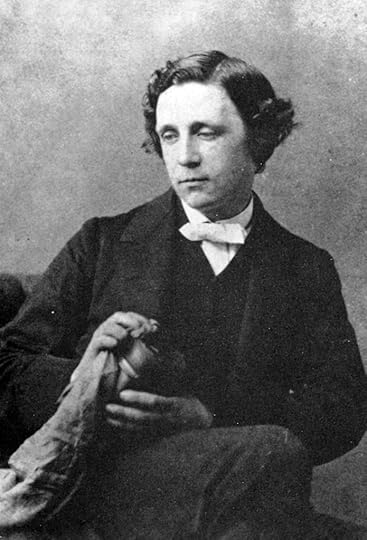
Lewis Carroll – polishing a camera lens? Photograph by Oskar Gustav Rejlander
October 28, 2014
Stiff Upper Lips
A few days ago, a new opera called Shell Shock premiered in Brussels, just one of the huge number of commemorative events marking the anniversary of the outbreak of the First World War. Works of art such as Pat Barker’s mesmerising Regeneration trilogy have already made a huge contribution to our understanding of shell shock, though sadly, not enough to ensure we are dealing with it effectively today. ‘You don’t ever get over it’ was the headline of a disturbing article in last week’s Guardian about the treatment – or non-treatment – of combat stress today, through interviews with British soldiers who have served in Afghanistan, Iraq and Northern Ireland. Names change - in the 19th century it was known as ‘soldier’s heart‘ - but symptoms and effects remain constant and devastating.
For That Burning Summer, I needed to find out exactly what would have happened during the Second World War to a pilot who who ‘lost his nerve’, as Henryk does after bailing out of his burning Hurricane. It was surprisingly hard to work out. Records of psychiatric casualties in the RAF during World War Two are frustratingly elusive. But I quickly discovered that the label ‘LMF’ or ‘Lack of Moral Fibre’ was a horrifying threat which hung over all airmen until late 1945. (In That Burning Summer, Peggy’s young brother Ernest becomes obsessed with it, fearing it might apply to him and his pacifist father.) Unofficially, the accusation of ‘LMF’ has been bandied around ever since.
It’s a peculiarly British term, hastily introduced by senior officers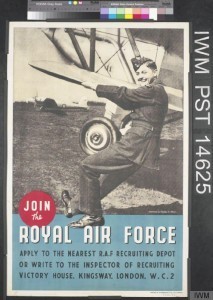 in April 1940 because the RAF badly needed a deterrent for aircrew who were becoming (understandably) reluctant to fly. This was a point in the war when maintaining morale was a key part of British strategy: stiff upper lips were needed to save the day. Flying stress, aeroneurosis and aviators’ neurasthenia had all been recognised as real conditions before the war, with symptoms similar to shell shock. But as Britain faced invasion, there was a fear that if doctors diagnosed too many airmen with these disorders, the result might be a mass exodus from an already short-staffed airforce, and sufferers would be entitled to a pension.
in April 1940 because the RAF badly needed a deterrent for aircrew who were becoming (understandably) reluctant to fly. This was a point in the war when maintaining morale was a key part of British strategy: stiff upper lips were needed to save the day. Flying stress, aeroneurosis and aviators’ neurasthenia had all been recognised as real conditions before the war, with symptoms similar to shell shock. But as Britain faced invasion, there was a fear that if doctors diagnosed too many airmen with these disorders, the result might be a mass exodus from an already short-staffed airforce, and sufferers would be entitled to a pension.
So they came up with LMF – not a diagnosis of a medical condition, but the very opposite. It was used as a form of intimidation. Men with LMF were effectively branded as cowards, and their treatment was designed to humiliate and stigmatise: pilots were stripped of their rank, and even paraded in public in their badgeless uniforms. ’Firm treatment’ indeed. Most airmen preferred to risk the odds they faced in the air, however desperate. (In Bomber Command, you had a 67% chance of being killed on your first tour of duty, and 84% on your second.)
Breakdown rates were highest – or perhaps most obvious – in Bomber Command, where the problem was seen as ‘dangerously contagious’. However, there was a great deal of confusion about LMF among those in charge of psychological warfare, as the Flying Personnel Research Committee (FPRC) itself admitted in 1942. Some doctors recognised that flying stress built up over time, and that everybody had a ‘breaking point’. Yet no official distinction was made between a crisis of confidence during a training flight, and a collapse of nerve after an airmen’s twentieth sortie. And while there was huge concern about the supposedly infectious nature of LMF, most medics illogically agreed that men who broke down under the stress of flying in battle were ‘constitutionally timid’: their characters were at fault. This weakness was blamed on their genes or their family background. Social class was clearly perceived as a factor, if only by implication.
Search the RAF website today, and you’ll find no mention of LMF. Although it was quickly abandoned as official terminology after the war, it remains a controversial and politically sensitive subject.
L.M.F. Case
“You wished to see me
For personal reasons?”
I waited and scanned his face,
Searching for a clue.
“I am sorry to bother you …”
His anguish gave pause,
Then stumbled on ….
“I can’t continue with the course …”
He made his declaration -
The affirmation of his fear …
“I cannot fly ….”
“Cannot fly … ” I queried .. “Why ?”
But knew the answer ….
“Because I am afraid …”
He spoke the simple fearful words ….
The Truth that most men lie.
Confused, I sat in silence,
Weighing up the cruel alternatives.
“How many hours have you flown ?”
“Twelve …”
“Pity you didn’t come to me before …”
The pity was with him.
His eyes searched mine in hope.
Rather than betray, I looked away ….
“If you had decided on this course last week,
You could have withdrawn.
Unfit for further training …”
“And now … ?” he choked on his words.
“I can only refer the matter
To the Chief Instructor.”
He looked beyond me
To the shame that lay ahead ….
“I kept telling myself
That I would get used to it …”
He quietly said.
“But each time I flew,
I froze with fear …”
“I’ll do my best …”
I lamely volunteer.
“Clear case …” the C.I.
Gave the lead.
The M.O. and the Padre both agreed.
It was agreed ….
Confirmed by all on high.
Stripped of his rank …
Cashiered ….
Disgraced ….
‘Refused to fly.’
This poem by George Cocker, who joined the RAF in 1939 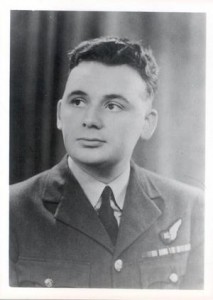 at the age of 18, is one of a number he contributed to WW2 People’s War, an online archive of wartime memories collected from members of the public by the BBC. Cocker’s poetry often uses dialogue to convey the yawning gap between the official language of air warfare and the actual experience of individuals taking part. Several were anthologised by the Salamander Oasis Trust, an organisation which came out of a group of poets who served in Cairo during the war, and published their first selection of wartime poetry there in 1943. As the Trust website says: ‘it was the desert war in North Africa that first inspired many of the poets of World War II. Later the poetry of the Second World War would be written in battle areas all over the world from EI Alamein to Burma, and from the beaches of Normandy to the islands of the Pacific. It was written by men holding every kind of rank in the three services, many of whom had never written a word in their l
at the age of 18, is one of a number he contributed to WW2 People’s War, an online archive of wartime memories collected from members of the public by the BBC. Cocker’s poetry often uses dialogue to convey the yawning gap between the official language of air warfare and the actual experience of individuals taking part. Several were anthologised by the Salamander Oasis Trust, an organisation which came out of a group of poets who served in Cairo during the war, and published their first selection of wartime poetry there in 1943. As the Trust website says: ‘it was the desert war in North Africa that first inspired many of the poets of World War II. Later the poetry of the Second World War would be written in battle areas all over the world from EI Alamein to Burma, and from the beaches of Normandy to the islands of the Pacific. It was written by men holding every kind of rank in the three services, many of whom had never written a word in their l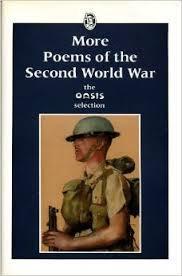 ives before. And not only were men writing poetry about the war, but members of the three women’s services were contributing as well. After the war, the Salamander Oasis Trust was set up to collect, edit and publish not only the original Cairo poems but selections from all the other poetry written during the Second World War. The one requirement was that it had all been written at the time or soon after by people serving in the Forces between 1939-1945 or, in the case of the Balkans, 1946.’
ives before. And not only were men writing poetry about the war, but members of the three women’s services were contributing as well. After the war, the Salamander Oasis Trust was set up to collect, edit and publish not only the original Cairo poems but selections from all the other poetry written during the Second World War. The one requirement was that it had all been written at the time or soon after by people serving in the Forces between 1939-1945 or, in the case of the Balkans, 1946.’
Further reading on Lack of Moral Fibre/Flying Fatigue
Jonathan Croall: Don’t You Know There’s A War On: Voices from the Home Front(Hutchinson 1988)
Allan D. English: A Predisposition to Cowardice? Aviation Psychology and the Genesis of ‘Lack of Moral Fibre [Source: War & Society, Volume 13, Number 1, May 1995 , pp. 15-34(20)]
Ben Shepherd: A War of Nerves: Soldiers and Psychiatrists, 1914-1994 (Pimlico, 2002)
C. P. Symonds, ‘The Human Response to Flying Stress: Lecture 1: Neurosis in Flying Personnel‘, The British Medical Journal, Vol. 2, No. 4326 (Dec. 4, 1943), pp. 703-706
Patrick Bishop, Bomber Boys (Harper Perennial, 2008) – chapter 13 ‘Crack Up’
Joanna Bourke: Fear – a Cultural History (Virago 2005)
(And I also thoroughly recommend this excellent review of an earlier book by Bourke and its relationship to Pat Barker’s Regeneration trilogy by shell shock historian Dr Tracey Loughran which has very interesting things to say about the relationship between the work of historians and historical novelists…)
Several stories collected by the BBC for the ‘WW2 People’s War online archive’ make reference to LMF: ‘An Airman’s Son’ is a particularly moving memoir, which illustrates the difficulties for both historians and family members in piecing together what actually happened in these situations during that time.
More background reading for That Burning Summer can be found here.
The RAF wings pictured belonged to Pilot Officer Frederick Harrold, who was killed in action during the Battle of Britain. Harrold, of Hills Road, Cambridge, was killed on Saturday, 28th September over Deal, Kent, having only just been posted to 501 Squadron two days previously. This image, and the RAF recruitment poster, are available to share and reuse under the terms of the IWM Non Commercial Licence.
October 5, 2014
‘Maximum meaning, minimum means’
Today’s my first post as one of the History Girls…follow the link to find out more about the man behind this brilliant image. (Not an artist, but ‘a graphic thinker’.)
September 18, 2014
School visits: bonus time
There’s something particularly satisfying about reading creative work that’s been produced by students after a school visit. Last summer I went to talk to a group of Year 9 girls at Streatham and Clapham High School, who were – most impressively – finding out about the Spanish Civil War in Spanish. I thought it was such an imaginative approach to learning a language, and it was fantastic to meet students so engaged with the history and culture of Spain. Fortunately for me, I didn’t have to give my talk in Spanish. Even better, the project led to some wonderful pieces of writing in English, the best of which – by Anna and Lulu – you can read below. Congratulations to both writers!
I’ll be back at the school soon, taking part in STREAM 2014, the new South London Book Festival, which Malorie Blackman opens on Saturday 8th November. It’s an unmissable opportunity, open to all, to come and see a truly unbelievable range of great authors, including many of my fellow CWISL writers and illustrators, with something for readers and writers of every age. Best of all, nearly all the sessions are free. But you do need to book, and the sooner the better. I’ll be taking part in a panel event from 1-2pm: Fiction, War and Conflict, with Anna Perera (Guantanamo Boy and The Glass Collector) and David Massey (Taken and Torn), hosted by Guardian journalist, Ian Cobain.
Anna and Lulu’s evocative diary entries imagine life immediately after the end of the Spanish Civil War. The elected Republican government had been defeated by Nationalist rebels, and the country was under the repressive dictatorship of General Franco. Interestingly, both young writers have chosen the perspective of teenagers living in regions which have continued to seek autonomy from Spain ever since. Anna’s story is set in the Basque country; Lulu’s in Catalonia. I think their writing shows a real grasp of the impact of the war on ordinary families, so many of whom were left divided for generations, and are still trying to find out the truth about what happened to relatives who died during the war.
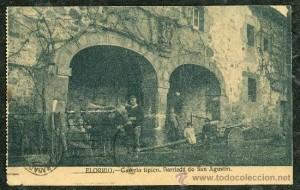
This postcard shows the Basque town of Elorrio as it was in the early 1930s, before the outbreak of the war.
El diez de mayo, 1939
The Civil War is finally over! My family and I were able to return to Elorrio from where we had fled during the war. However, we still cannot speak our language or eat our delicacies; Franco is determined to make sure we are Spanish; just Spanish. It is like being rid of our identities. But my father does not believe in Franco’s ideals. We have friends who own the panadería and carnicería and they smuggle food to us. Every Friday night we have a Basque dinner and speak our own language. We cannot tell anyone though; I’m not even allowed to tell my friends, Pa says Franco has spies everywhere.
Our small town seems even smaller now. Some will never return; they are still in hiding somewhere in the south, some fled to Switzerland and France. But Pa says we are safest here; with our families. My grandma says a storm is coming, that the Germans are plotting a war, but nobody really listens to her. I cannot imagine another war, not after the one that has just passed. At night I pray for those who remain in Guernica, we had cousins living there; I had never met them but my father wept the night the news spread around the town, I didn’t have to ask whether they made it or not. It was the first time I had seen him cry since Ma.
Now we have to continue with our lives, the same as before. But I don’t think it will ever be the same, at least not in my lifetime. Maybe one day people here will be happy, children skipping in the streets and talking in Basque. I can only pray that for the people of Elorrio. Of course I am relieved the war is over, too many of our people died, too many of our friends… however, in some ways, it feels as though it will never stop: the discrimination, the rules, and the secrets…the fear.

Bomb damage in Barcelona, 1938
1st April 1939
Dear diary,
I cannot believe that Franco has won the war, this is tragic. He leads a dictatorship which means that there are no elections and we have little freedom. I wish to flee Barcelona and go to England. My family has been torn apart, my family and my mother’s family were part of ‘el frente popular’ against Franco but my dad’s family were supporting ‘el frente nacional’ with Franco.
Before the war started there were disagreements in my family between who supported who but never arguments. However, now my family won’t speak to my father’s family or even mention any of their names. I am so upset my grandma on my dad’s side was so nice and caring but when war broke out her character changed completely now she is very strict and mean but I guess it doesn’t matter now because I will probably never see her again.
My best friend Maria’s family support Franco so I have not seen her since the war started. I am so upset, I cry every night. My whole world has been destroyed. School has turned from a friendly and safe place to a place I dread going to every morning. All the teachers who were against Franco have been fired and new teachers have been employed who are mean and strict.
If I had a chance I would escape Spain but there is no chance in that happening because the borders are monitored very carefully. If I was caught trying to escape Spain I would probably be sent to prison.
Tomorrow is my cousin’s funeral from my mum’s side; he died fighting against Franco, so my dad’s family will not be attending. He does not get a proper funeral at the church because the church was with Franco, so they will not permit any opposing soldiers to have a funeral there which is very sad. We are going to visit the hospital were his body is to pay our respects, but then his body has to be taken away; my aunt and uncle are distraught.
Carmela
Find out more about my school visits here, and do contact me (lydia.syson@hotkeybooks.com) if you’d like to book me to come to your school or any other event.
August 1, 2014
Summer news – updated
This is a bits-and-pieces, catch-up kind of a post, mostly to express my gratitude to lots of different people who’ve helped me in my work in lots of different ways over the past few months…
Picture Books
 My first exciting piece of news is that I’ve just signed with a second agent: Anne Clark of Anne Clark Literary Agency now represents my work for younger children. I’m already enjoying working with her enormously. Catherine Clarke of Felicity Bryan Associates will continue to handle all my writing for anyone over seven (adults included). To be honest, I can’t quite believe my luck in having two such fantastic agents.
My first exciting piece of news is that I’ve just signed with a second agent: Anne Clark of Anne Clark Literary Agency now represents my work for younger children. I’m already enjoying working with her enormously. Catherine Clarke of Felicity Bryan Associates will continue to handle all my writing for anyone over seven (adults included). To be honest, I can’t quite believe my luck in having two such fantastic agents.
Picture books are a real departure for me and a whole new challenge. I love the discipline involved. There’s an absolute precision required – the need not just for every single word to do its work, but every single page-turn, punctuation mark and unspoken idea too – which I find actually feeds back very fruitfully into all my other forms of writing. I don’t think I’d have dared try this at all without the support and inspiration of various networks of children’s writers I’ve got to know over the past few years – hugely talented picture book authors and illustrators in CWISL, SAS, SCWBI and also the National Literacy Trust‘s 21st Century Author programme (more on which shortly). I’ve also learned a huge amount from the brilliant Picture Book Den blog, which I thoroughly recommend. So now I’m crossing my fingers on the publication front.
Author Events
Some members of my family may be convinced I live in the dark ages, but actually I’m now officially a 21st Century Author. This is thanks to an NLT scheme funded partly by the Arts Council and partly by the Premier League to train children’s authors – new and not quite so new – in the art of doing events. It was designed to complement the NLT’s  astonishingly successful Premier League Reading Stars Programme, which harnesses footballers’ enthusiasm for books and stories to enthuse children and teenagers who are finding reading a struggle, and the training was brilliantly delivered by the Author Profile team (above) Ruth Symes (aka Megan Rix) blogged about the first meeting back in January on An Awfully Big Blog Adventure and Jo Franklin wrote about the programme in February. Three separate sessions covered three key areas: devising appropriate and flexible content; improving performance delivery; the very practical nitty-gritty of organising events, from marketing to bookselling. It’s hard to say which of these was more useful. I’m so grateful to all the organisations involved in this scheme. These days there’s so much more involved in being an ‘author’ than simply writing books, and support of this calibre for all the other stuff is absolutely invaluable.
astonishingly successful Premier League Reading Stars Programme, which harnesses footballers’ enthusiasm for books and stories to enthuse children and teenagers who are finding reading a struggle, and the training was brilliantly delivered by the Author Profile team (above) Ruth Symes (aka Megan Rix) blogged about the first meeting back in January on An Awfully Big Blog Adventure and Jo Franklin wrote about the programme in February. Three separate sessions covered three key areas: devising appropriate and flexible content; improving performance delivery; the very practical nitty-gritty of organising events, from marketing to bookselling. It’s hard to say which of these was more useful. I’m so grateful to all the organisations involved in this scheme. These days there’s so much more involved in being an ‘author’ than simply writing books, and support of this calibre for all the other stuff is absolutely invaluable.
Find out more about my school visits here. 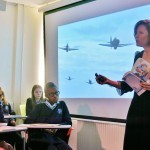
Find out more about the National Literacy Trust’s work to improve reading, writing, speaking and listening skills in the UK’s most disadvantaged communities here.
How you can help the National Literacy Trust:
* Unpublished children’s writers can help raise money for the NLT by entering the New Children’s Author Prize AND win themselves a publishing contract with Bloomsbury with a £5,000 advance. You need to submit a 20-40,000 word story aimed at children aged 8-12, and you must be over 18 and a UK resident. Judges include Katherine Rundell, award-winning author of Rooftoppers and The Girl Savage.
 * Runners, walkers and anyone who aged 8+ who likes dressing up/ stripy shirts/bobble hats and lives in the Midlands can take part in the NLT’s Where’s Wally? Fun Run in Birmingham on October 4th.
* Runners, walkers and anyone who aged 8+ who likes dressing up/ stripy shirts/bobble hats and lives in the Midlands can take part in the NLT’s Where’s Wally? Fun Run in Birmingham on October 4th.
* Anyone who reads can raise money for the NLT thanks to a promotion by the online retailers Flubit, where August is book month. A 100 character micro book review in the form of a tweet tagged #flubitbooks will trigger a £1 donation from @flubitweet and a 200-300 word review of any book emailed to books@flubit.com will result in a free book for you and, better still, a £10 donation to the National Literacy Trust. But don’t waste any time – this promotion only runs till the end of August.
Teaching and Mentoring work:
Last term I taught my first novel-writing course at City University, London – a very rewarding experience – and I’ll continue to be a Visiting Lecturer in the creative writing Short Course programme. I’m also mentoring new writers on a one-to-one basis, something which I’ve not really advertised yet, as there’s a limit to how many projects I can take on at one time. (But do contact me to discuss mentoring if you’re interested in the future.) The first book by an author I’ve mentored from beginning to end was beautifully published by Bloomsbury in March this year: Two Turtle Doves, ’a memoir of making things’, by jeweller Alex Monroe, described by The Spectator as ’a master-craftsman of the anecdote’:
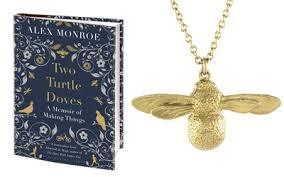 ‘A hidden gem…It is difficult to think of a text that better describe the way in which lived experience is translated by high craftsmanship into art…’
‘A hidden gem…It is difficult to think of a text that better describe the way in which lived experience is translated by high craftsmanship into art…’
Im Dunklen Licht der Tage
A World Between Us came out in Germany, published by Oetinger, 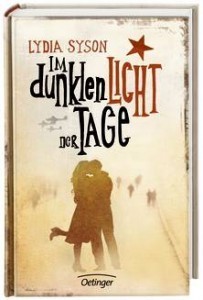 putting me in illustrious company which includes Astrid Lindgren and Suzanne Collins! The title translates as ‘In the Dark Light of the Day’. The Spanish Civil War has an interesting history in Germany, particularly pre-unification. Germans fought on both sides in Spain. German International Brigaders taking their first opportunity to fight fascism were left with no country to return to after the Republican government was defeated, and among the forces sent by Hitler to help Franco’s nationalists, German pilots were particularly crucial in the rebel’s bombing campaign, notably at Guernica. But of course few countries in the world have been as willing to come to terms with their history than Germany.
putting me in illustrious company which includes Astrid Lindgren and Suzanne Collins! The title translates as ‘In the Dark Light of the Day’. The Spanish Civil War has an interesting history in Germany, particularly pre-unification. Germans fought on both sides in Spain. German International Brigaders taking their first opportunity to fight fascism were left with no country to return to after the Republican government was defeated, and among the forces sent by Hitler to help Franco’s nationalists, German pilots were particularly crucial in the rebel’s bombing campaign, notably at Guernica. But of course few countries in the world have been as willing to come to terms with their history than Germany.
It’s early days – just a week and a half since publication, but so far, so enthusiastic….this blogger’s 5* review rates Im Dunklen Licht der Tage as the best realist book of 2014.
Thanks to translator Astrid Scherff-Hübner and cover designer Cornelia Niere and of course my lovely editor at Oetinger, Maya Geis.
Other news
When not thinking about picture books, my head is full of revolution and nineteenth-century France. This autumn will see me revising my Liberty’s Fire manuscript, and I’ll be making one more research trip to Paris.
I’ve recently joined the team on the great blog, The History Girls. The name speaks for itself but do follow the link if you’re not familiar with this groups of writers. I’ll be blogging on the 6th of every month, starting in October.
The CWISL Shoutwest Festival at Brunel University was a great success in June – read all about it in Books for Keeps.
(NB The image of newspaper reading at the top is by Daumier, empathetic and incisive caricaturist of Parisian politics and society in the 19th century.)
Summer news
This is a bits-and-pieces, catch-up kind of a post, mostly to express my gratitude to lots of different people who’ve helped me in my work in lots of different ways over the past few months…
Picture Books
 My first exciting piece of news is that I’ve just signed with a second agent: Anne Clark of Anne Clark Literary Agency now represents my work for younger children. I’m already enjoying working with her enormously. Catherine Clarke of Felicity Bryan Associates will continue to handle all my writing for anyone over seven (adults included). To be honest, I can’t quite believe my luck in having two such fantastic agents.
My first exciting piece of news is that I’ve just signed with a second agent: Anne Clark of Anne Clark Literary Agency now represents my work for younger children. I’m already enjoying working with her enormously. Catherine Clarke of Felicity Bryan Associates will continue to handle all my writing for anyone over seven (adults included). To be honest, I can’t quite believe my luck in having two such fantastic agents.
Picture books are a real departure for me and a whole new challenge. I love the discipline involved. There’s an absolute precision required – the need not just for every single word to do its work, but every single page-turn, punctuation mark and unspoken idea too – which I find actually feeds back very fruitfully into all my other forms of writing. I don’t think I’d have dared try this at all without the support and inspiration of various networks of children’s writers I’ve got to know over the past few years – hugely talented picture book authors and illustrators in CWISL, SAS, SCWBI and also the National Literacy Trust‘s 21st Century Author programme (more on which shortly). I’ve also learned a huge amount from the brilliant Picture Book Den blog, which I thoroughly recommend. So now I’m crossing my fingers on the publication front.
Author Events
Some members of my family may be convinced I live in the dark ages, but actually I’m now officially a 21st Century Author. This is thanks to an NLT scheme funded partly by the Arts Council and partly by the Premier League to train children’s authors – new and not quite so new – in the art of doing events. It was designed to complement the NLT’s  astonishingly successful Premier League Reading Stars Programme, which harnesses footballers’ enthusiasm for books and stories to enthuse children and teenagers who are finding reading a struggle, and the training was brilliantly delivered by the Author Profile team (above) Ruth Symes (aka Megan Rix) blogged about the first meeting back in January on An Awfully Big Blog Adventure and Jo Franklin wrote about the programme in February. Three separate sessions covered three key areas: devising appropriate and flexible content; improving performance delivery; the very practical nitty-gritty of organising events, from marketing to bookselling. It’s hard to say which of these was more useful. I’m so grateful to all the organisations involved in this scheme. These days there’s so much more involved in being an ‘author’ than simply writing books, and support of this calibre for all the other stuff is absolutely invaluable.
astonishingly successful Premier League Reading Stars Programme, which harnesses footballers’ enthusiasm for books and stories to enthuse children and teenagers who are finding reading a struggle, and the training was brilliantly delivered by the Author Profile team (above) Ruth Symes (aka Megan Rix) blogged about the first meeting back in January on An Awfully Big Blog Adventure and Jo Franklin wrote about the programme in February. Three separate sessions covered three key areas: devising appropriate and flexible content; improving performance delivery; the very practical nitty-gritty of organising events, from marketing to bookselling. It’s hard to say which of these was more useful. I’m so grateful to all the organisations involved in this scheme. These days there’s so much more involved in being an ‘author’ than simply writing books, and support of this calibre for all the other stuff is absolutely invaluable.
Find out more about my school visits here.
Teaching and Mentoring work:
Last term I taught my first novel-writing course at City University, London – a very rewarding experience – and I’ll continue to be a Visiting Lecturer in the creative writing Short Course programme. I’m also mentoring new writers on a one-to-one basis, something which I’ve not really advertised yet, as there’s a limit to how many projects I can take on at one time. (But do contact me to discuss mentoring if you’re interested in the future.) The first book by an author I’ve mentored from beginning to end was beautifully published by Bloomsbury in March this year: Two Turtle Doves, ’a memoir of making things’, by jeweller Alex Monroe, described by The Spectator as ’a master-craftsman of the anecdote’:
 ‘A hidden gem…It is difficult to think of a text that better describe the way in which lived experience is translated by high craftsmanship into art…’
‘A hidden gem…It is difficult to think of a text that better describe the way in which lived experience is translated by high craftsmanship into art…’
Im Dunklen Licht der Tage
A World Between Us came out in Germany, published by Oetinger,  putting me in illustrious company which includes Astrid Lindgren and Suzanne Collins! The title translates as ‘In the Dark Light of the Day’. The Spanish Civil War has an interesting history in Germany, particularly pre-unification. Germans fought on both sides in Spain. German International Brigaders taking their first opportunity to fight fascism were left with no country to return to after the Republican government was defeated, and among the forces sent by Hitler to help Franco’s nationalists, German pilots were particularly crucial in the rebel’s bombing campaign, notably at Guernica. But of course few countries in the world have been as willing to come to terms with their history than Germany.
putting me in illustrious company which includes Astrid Lindgren and Suzanne Collins! The title translates as ‘In the Dark Light of the Day’. The Spanish Civil War has an interesting history in Germany, particularly pre-unification. Germans fought on both sides in Spain. German International Brigaders taking their first opportunity to fight fascism were left with no country to return to after the Republican government was defeated, and among the forces sent by Hitler to help Franco’s nationalists, German pilots were particularly crucial in the rebel’s bombing campaign, notably at Guernica. But of course few countries in the world have been as willing to come to terms with their history than Germany.
It’s early days – just a week and a half since publication, but so far, so enthusiastic….this blogger’s 5* review rates Im Dunklen Licht der Tage as the best realist book of 2014.
Thanks to translator Astrid Scherff-Hübner and cover designer Cornelia Niere and of course my lovely editor, Maya Geis.
Other news
When not thinking about picture books, my head is full of revolution and nineteenth-century France. This autumn will see me revising my Liberty’s Fire manuscript, and I’ll be making one more research trip to Paris.
I’ve recently joined the reserve team on the great blog, The History Girls. The name speaks for itself but do follow the link if you’re not familiar with this groups of writers.
The CWISL Shoutwest Festival at Brunel University was a great success in June – read all about it in Books for Keeps.
(NB The image of newspaper reading at the top is by Daumier.)
July 3, 2014
Darkling I listen
I’ve only heard a nightingale sing once, in a wood near Bristol, when I was in my early twenties. Last Sunday I stood in the dark and listened to a recording made in 1942, in Surrey. This nightingale was ‘pouring forth its soul abroad’ – rather more widely even than Keats’ bird, since it was being broadcast live by the BBC – in a short-lived annual tradition that was about to end. It was broken that night because the engineer realised that his new high-fidelity microphone was also picking up the growing hum of a flight of bombers. Nearly two hundred aircraft were heading for Germany, and he did not want to warn the enemy of the impending raid. Fortunately he continued to record, if not to broadcast, and the result is now part of The Wind Tunnel Project.
Here in Q121 at Farnborough, rather than Hampstead  or Foyle Riding, my ‘enbalmed darkness’ was not heavy with the scent of hawthorne and eglantine but dank concrete. I pushed my way through immense cold curving fins, a harsher forest than fruit trees. Offered arrowed invitations to ‘explore the light, explore the dark’, I had chosen the dark. The effect was something like walking into a James Turrell installation. It was hard to trust your senses, and took a little courage to step away from the soft shuffle of slippered feet and into unknowable blackness, towards this strange music.
or Foyle Riding, my ‘enbalmed darkness’ was not heavy with the scent of hawthorne and eglantine but dank concrete. I pushed my way through immense cold curving fins, a harsher forest than fruit trees. Offered arrowed invitations to ‘explore the light, explore the dark’, I had chosen the dark. The effect was something like walking into a James Turrell installation. It was hard to trust your senses, and took a little courage to step away from the soft shuffle of slippered feet and into unknowable blackness, towards this strange music.
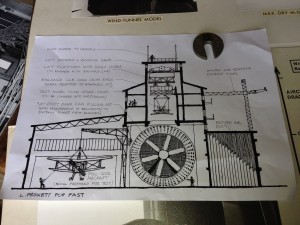 I was inside the belly of one of the earliest aerodynamic testing facilities in the world. Hawker Hurricanes, like the one that disappears into Romney Marsh in That Burning Summer, were among many well-known aircraft tested here. Thanks to Artliner, the listed buildings are open to the public for just six weeks this summer (closing on 20th July): I was determined to go the moment I read about it.
I was inside the belly of one of the earliest aerodynamic testing facilities in the world. Hawker Hurricanes, like the one that disappears into Romney Marsh in That Burning Summer, were among many well-known aircraft tested here. Thanks to Artliner, the listed buildings are open to the public for just six weeks this summer (closing on 20th July): I was determined to go the moment I read about it.
The aeroplanes which once hung in the tunnel, buffeted by a carefully controlled artificial gale, are ghosted in reverse by speakers in the shape of a polished wood gramophone horn, flanked by shapes suggestive of a twin-prop. They face a gigantic mahogany propellor, now still, majestic with the kind of beauty that comes with that perfect union of form and function. As the sound of the bombers intensifies, their high roar is imperceptibly transformed into a chorus of human voices, drowning out the birdsong.
I loved The Wind Tunnel Project for lots of reasons. Wars have left many architectural markers on this country, constructions that often seem both to scar and enhance the landscape (as Corinna Dean’s new book Slacklands elegantly makes evident). These strange, semi-abandoned cathedrals to flight, now in the middle of a smart business park, were among the most evocative places I’ve been, and will affect every visitor differently of course. You might be drawn to an empty control room. An anticlastic curve. A sense of the presence of absence, which even worshippers in the form of extremely talkative technical experts could not dispel when we were there. (They blithely ignored the signs requesting silence.)
I have a cousin whose father was a test pilot during the war, and was killed in the process. His daughter had hoped to locate the wartime correspondence between him and his brother, Peter Wheeler, my great-uncle, who was an RAF fighter pilot, and survived. This was while I was writing That Burning Summer. I’m still hoping that bundle of letters, which she remembers as tied with a red ribbon, will turn up. It seems, for the time being, to have slipped between cracks in the family, as old letters often do. At The Wind Tunnel Project, I thought of the letters and their authors, just as I thought of Henryk and his paper planes (‘High ceiling, wooden floor, littered with paper.’ TBS p.144) and remembered the days when our own house was filled with drifting origami aircraft, the product of an eight year old’s obsessive experimentation.

A postgraduate student in Information Experience Design at the Royal College of Art, Xinglin Sun, had the idea to give out instruction sheets in this form, which could be released in the smaller wind tunnel in building R52.
When I learned that the first Surrey nightingale was the first BBC ‘Outside Broadcast’ I was also reminded of my own first ‘OB’, a World Service programme which went out live from another cathedral-like structure: the Palm House at Kew Gardens. It included the artist Helen Chadwick, who died a few years later, after contracting a virus during her work on foetal waste. You won’t be surprised to learn that the skeleton of the 1912 airship shed instantly brought Vango, and Hugh Eckener‘s monumental Zeppelins to mind.
Last weekend The Wind Tunnel Project also hosted an exhibition of military art from a number of sources: a contemporary war artist‘s interpretation of Afghanistan, some incredibly impressive ‘A’ level work using bottle tops, safety pins, moss and a flowers to create military jackets that turn into tombs, and material produced in the course of art therapy by soldiers suffering from Combat Stress. LMF – Lack of Moral Fibre – has theoretically been confined to history, although Elizabeth Wein told me earlier this year that an instructor once accused her of it when she was learning to fly and wasn’t keen to take off in bad weather. I thought of Henryk’s lucky Polish stone and Nat’s reflections on fortune at the Ebro when confronted with a sculpture about contemporary soldiers’ superstitions by Polly Hughes called 20% LUCK (2011). Some aspects of war never change. When children ask me, as they often do, why I like writing about war, this is one answer.
Read the full story of the nightingale recordings and their interruption at Public Address, in a brilliant account of archive browsing and ‘convolutes’. Find out more about the wind tunnels and their history at FAST – the Farnborough Air Sciences Trust. If you’d like to encourage the BBC to revive the traditional of annual May broadcasts of cello-accompanied nightingale song, although it’s too late for this year, you might as well sign this petition. You never know, and you’ll find out more about nightingales on the campaign website. The RSPB also offers advice about where to hear nightingales in Britain these days.
IMPORTANT – if you drive to The Wind Tunnel Project on a weekend, you may be misled by the AA signs, so make sure you are definitely going to the postcode on your ticket. And although it’s not very clear from the Eventbrite booking page, children under 12 are free and students/12-18 year olds half price.
Thanks to my brother Luke for contributing some of the photographs!
June 5, 2014
Celebrating Romance
Think of historical romance, and I suspect you’ll find yourself instantly bogged down in swathes of taffeta, tripping over corset-laces and tumbling into somebody’s moonlit arms beneath ivy-bedecked castle walls.But eyes can meet in strange places, and romance fiction, particularly the historical variety, has a lot in common with YA – it’s surprisingly hard to define. When Hot Key Books revealed its launch list way back in the summer of 2012, I was delighted to see A World Between Us described not just as historical romance, but political historical romance.
As far as I’m concerned, the common feature that unites all romantic fiction is passion. It doesn’t simply have to be passion for a person, important though that is. In That Burning Summer, Henryk’s childhood passions for aeroplanes and exploration are horribly twisted by the demands of war.
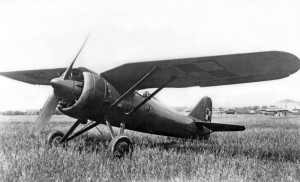 He takes to the skies in September 1939 not to experience the purity of flight he’d longed for as a boy, but to kill or be killed. He journeys half-way round the world as an exile, who may never return to a country that will be utterly transformed by the end of the war. ‘Poland, Poland, ah Poland,’ the pilots sing in Beirut.
He takes to the skies in September 1939 not to experience the purity of flight he’d longed for as a boy, but to kill or be killed. He journeys half-way round the world as an exile, who may never return to a country that will be utterly transformed by the end of the war. ‘Poland, Poland, ah Poland,’ the pilots sing in Beirut.
As for A World Between Us, set in London and Spain in the late 1930s, its characters fall in love with ideas and ideals as much as with each other. Political romance – which sounds as if it could simply be a love story set in the House of Commons or the White House – is arguably a peculiarly ’30s genre. Nearly fifty years after the first publication of John Sommerfield‘s 1936 novel of working-class London, May Day, the author noted in a new edition that when he was writing the book, he’d have probably described it as socialist realism. ’Now I’d call it early ’30s Communist romanticism. I’m not in any way apologising for the book’s enthusiastic, simple-minded political idealism. Because it was a genuine idealism.’ (Sommerfield was not only an International Brigade volunteer himself, but also a contributor to the Mass Observation Movement, the subject of last month’s post.) Part of my research included listening to interviews and reading memoirs of my own grandfather, Jack Gaster, who, in retrospect, described his own political development in similar terms. He said that he was a romantic socialist before he was a political socialist.
I was as keen to capture the romance of 1930s politics in A World Between Us as I was to evoke the strange, heightened, delicious sensations of first love. ‘Imaginative, visionary, remote from experience’ is one dictionary definition of romance cited by the Romantic Novelists Association. Well, to change the world for the better, as the volunteers of the International Brigades were trying so hard to do – as indeed were the pacifists of the 1930s, ‘offstage’ in That Burning Summer - certainly demands imagination and vision, and can take you into realms that seem to defy everyday experience. Felix is briefly lifted into that realm for the first time with the mass singing of the Internationale at the Battle of Cable Street. She falls in love with hope for the future and Nat almost simultaneously.
So historical romance isn’t necessarily all parties and ball gowns. It can equally encompass the Party (see AWBU, p.133), and a soldier or nurse’s or a pilot’s uniform. Significant historical events, accurately related, can provide a spur to romance or indeed thwart it. As Sommerfield abbreviates Marx in his epigraph to May Days, ‘Men make history, but not as they please.’ I’ll be pursuing this theme further in my next novel, Liberty’s Fire, set in 19th Century Paris and out next year.
This weekend the whole rich variety of romantic fiction will be celebrated online at the first ever digital Romance Festival, organised by Harper Collins with the help of a huge range of authors and publishers, including my own.
Sign up here for the full programme.
If you’re a writer, join Hot Key Books’ Emily Thomas for an #Askaneditor session on Saturday between 2 and 3 pm. And on Sunday afternoon between 4 and 4.30 pm, a trio of very different Bonnier romance authors – me, ‘clean teen’ Cathy Hopkins and ‘steamy’ Liz Bankes – will be waiting for your questions and discussing our different approaches to romance on Twitter: #Romance14
 Get in the mood with a giveaway – win this lovely pile of our books with the best tweet about the most memorable kiss in YA fiction: #YAKiss. Don’t forget to include the hashtag #Romance14.
Get in the mood with a giveaway – win this lovely pile of our books with the best tweet about the most memorable kiss in YA fiction: #YAKiss. Don’t forget to include the hashtag #Romance14.
May 11, 2014
Observe yourself
Fieldwork. An anthropology of our own people, in the name of progress. Political empowerment. Or covert surveillance? Furtive notebooks and licked pencils? Psychoanthroposociologic Nosey Parkers, according to the Daily Herald.
You would struggle to find anything more utterly characteristic of the 1930s than the Mass Observation movement, and the mixed responses this social observation project provoked. I don’t think I could have written That Burning Summer without the help of the Mass Observers.
It began with a letter in the New Statesman on January 30th 1937 asking for volunteers to help the new organisation discover and document the behaviour, thoughts, feelings, hopes, fears and complaints of ordinary working people.

Tom Harrisson: ‘the Barefoot Anthropologist’
The movement’s founders, Tom Harrisson, Charles Madge and Humphrey Jennings, were a polymath ornithologist and anthropologist, a poet and a filmmaker. They were all concerned that the growing power of both the heavily conservative coalition government and of the media was distorting, if not silencing, the common voice.
Methods of data collection varied. Some posted in-depth personal diary entries to Madge, written on the 12th day of each month. Others responded to one-off random ‘Directives’, for example, asking if volunteers were more or less interested in ‘Crises’ (Abdication, Spain, Czechoslovakia, Japan…). The most invasive and heavily criticised method involved secretly noting down observations on particular themes, ranging, surreally, from aspidistras to anti-semitism, armpits to the al fresco sexual habits of holiday-makers in Blackpool.
The whole fascinating Archive is safely housed at Sussex University, the original papers from 1937 to the early 1950s curated alongside a second, still active collection of material that began to be collected in 1981. (Observing the 80s is now online.) The Archive is still recruiting regular volunteers and is currently looking for diarists aged between 16 and 44, male writers, and those living in anywhere in the UK other than the South East.
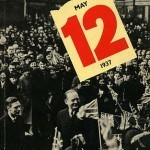 But today, anyone and everyone can make history. The Mass Observation Archive is calling for people to document May 12th 2014 in every mundane detail, and then email their ‘day diary’ to the Archive. Future readers might be academics or students, artists or community groups, teachers and writers. Whatever happens to you today, however boring it might seem – the price of your bus ticket, the biscuit you ate with your coffee, the newspaper article that caught your eye, the argument you overheard, the song you downloaded, or the exam you took – it will all be interesting to someone, for some reason, some day. Here’s how to take part.
But today, anyone and everyone can make history. The Mass Observation Archive is calling for people to document May 12th 2014 in every mundane detail, and then email their ‘day diary’ to the Archive. Future readers might be academics or students, artists or community groups, teachers and writers. Whatever happens to you today, however boring it might seem – the price of your bus ticket, the biscuit you ate with your coffee, the newspaper article that caught your eye, the argument you overheard, the song you downloaded, or the exam you took – it will all be interesting to someone, for some reason, some day. Here’s how to take part.
Find out more at The Keep, at Sussex University, where there will be a talk this Wednesday about Mass Observation diarists. Charles Madge was one of the subjects of last year’s thought-provoking Gresham Lecture, Middle Class Recruits to Communism in the 1930s. Angus Calder draws heavily on the M.O. Archive, which he helped to rescue, in his groundbreaking and engrossing social history The People’s War, (which I highly recommend) and he also co-edited ‘A Mass-Observation Anthology’ called Speak for Yourself which was published in 1984. Several diaries have been edited for publication, most famously those of Nella Last, pictured below.

